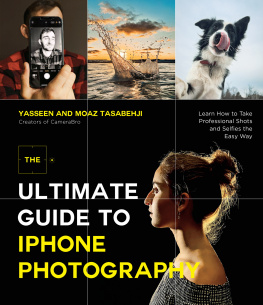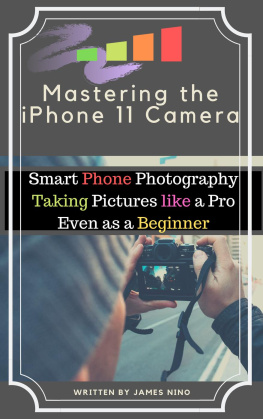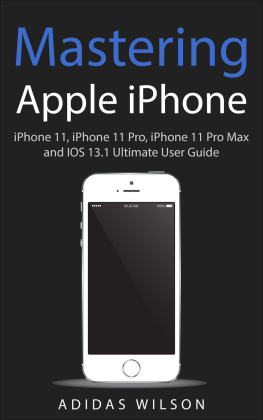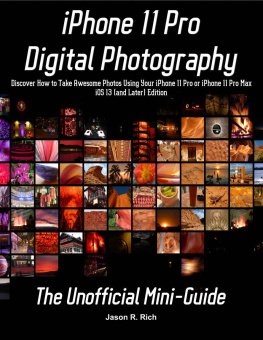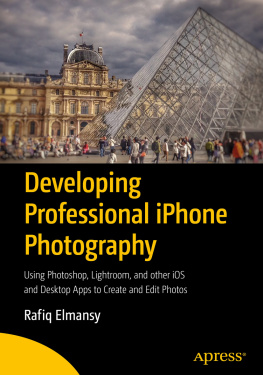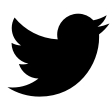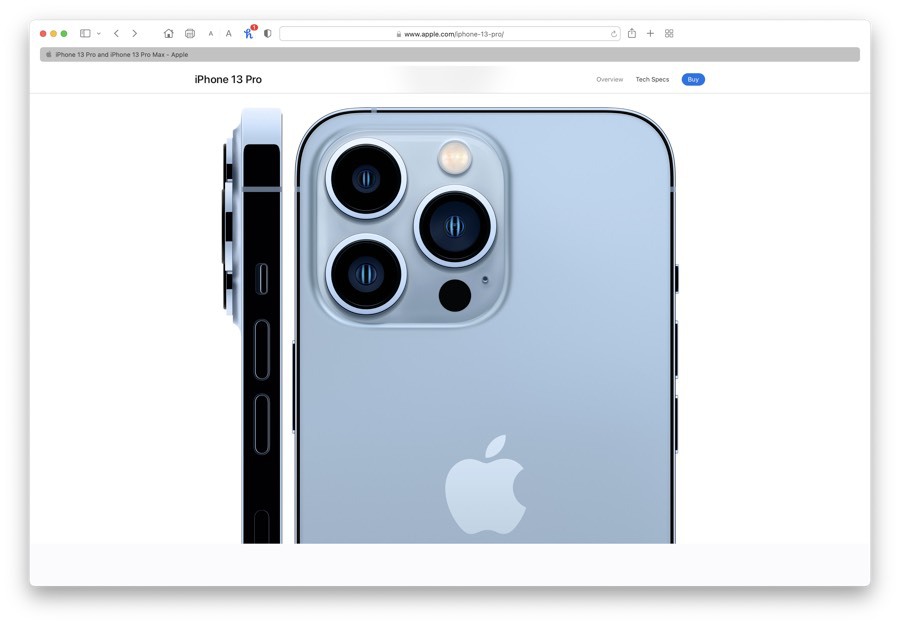iPhone 13 Pro Max Digital Photography
The Unofficial Mini-Guide: Fully Updated iOS 15 Edition
Jason R Rich
(c)2021 Jason R. Rich. All rights reserved.
No portion of this book, including all text, screenshots, and photos, may be reproduced, in any format, without written permission from the author. Please email for more information.
Apple, AirPrint, iPhone, iCloud, iPhone 13 Pro, and iPhone 13 Pro Max are trademarks of Apple, Inc. All other marks, names, and logos mentioned herein are the property of their respective owners. This book is not authorized or endorsed by Apple, Inc.
This book is dedicated to Rusty, my Yorkshire Terrier, who was my loyal writing companion for almost 16 years - until his passing in August 2020. He would often hang out under my desk as I was writing. This eBook is also dedicated to Lexi, my new writing companion, who turned one-year-old as I was updating this eBook.
Rusty Rich (01/31/05 - 08/20/20)
Contents
About the Author
Jason R. Rich is an internationally recognized iPhone expert and the author of numerous books that have been published by major publishing companies throughout the world.
He also regularly contributes articles to national magazines (including AARP The Magazine ), major daily newspapers, and popular websites (including Forbes Vetted). He is an accomplished photographer.
To learn more about Jason R. Rich, his books, and his latest writing and photography projects, please visit his website at: www.JasonRich.com.
Jason R. Rich also hosts and produces a podcast about smartphones and apps, called Jason Richs Featured App of the Week . Its available from Apple Podcasts and wherever else podcasts are available. To listen from your computer, please visit: www.FeaturedAppPodcast.com.
Chapter 1
Introduction to iPhone Photography
R eleased in September 2021, the iPhone 13 Pro and iPhone 13 Pro Max are Apples latest, top-of-the-line smartphones. These mobile devices are chock full of awesome and powerful features that make it easy to communicate in a variety of ways. These smartphones also include the tools needed to enhance your organization and productivity.
Aside from making and receiving calls, as well as sending and receiving text messages and emails, for example, the most popular uses of the Apple iPhone 13 Pro and iPhone 13 Pro Max are to take, edit, organize, print, and share digital photos.
More Advanced Technology Is Now Built Into Every iPhone 13 Pro and iPhone 13 Pro Max
As a digital camera, the iPhone 13 Pro smartphones offer one, 12MP (megapixel), front-facing camera, as well as three rear-facing, 12-megapixel cameras - one equipped with an ultra-wide-angle lens (offering up to a 120-degree field of view), the second equipped with a wide-angle lens, and the third with a powerful telephoto lens (shown in Figure 1.1).
Figure 1.1 - Apples website (www.Apple.com) showcases the iPhone 13 Pro Maxs rear-facing cameras.
Between using the optical and digital zoom capabilities built into the iPhones cameras and the Camera app, its possible to achieve up to 15x digital zoom as youre framing your shots.
Optical zoom refers to the zoom capabilities of the iPhones actual camera lenses, while digital zoom is what the Camera apps programming is capable of achieving to augment whats possible using the physical lenses that are built into your iPhone.
One advancement made to these new smartphones is the ability to capture macro (extreme close up) images with your smartphone positioned as close as two centimeters away from your subject. (Youll learn more about how and when to use this feature shortly.)
When it comes to taking photos of people, for example, the front- and rear-facing cameras can both utilize iOS 15s Portrait shooting mode, as well as the Camera apps Portrait Lighting feature with six effects (which youll learn about shortly). Both features now offer advanced Boken effect and depth control.
According to Wikipedia, In photography, Bokeh is the aesthetic quality of the blur produced in out-of-focus parts of an image. Bokeh has also been defined as the way the lens renders out-of-focus points of light. Differences in lens aberrations and aperture shape cause very different Bokeh effects
The iOS 15 edition of the Camera app, when used with an iPhone 13 Pro or iPhone 13 Pro Max, also includes:
- An improved Night Mode for taking photos in low light situations.
- What Apple refers to as next generation Smart HDR 4 .
- Advanced red-eye correction.
- Improved Live Photo capabilities.
- Photo geotagging (which records the exact location where photos are taken).
- Dual optical image stabilization (using the phones wide and telephoto lenses).
- Sensor-shift optical image stabilizations (using the wide lens).
- An enhanced Burst shooting mode.
- A brighter True Tone flash with Slow Sync.
- Auto image stabilizations.
- The ability to capture panoramic shots at up to 63MP resolution.
- The ability to incorporate customizable Photographic Styles to your digital images.
- A variety of other features designed to make it easier to achieve professional-quality results every time you take photos.
Whenever these features are used in conjunction with each other, its possible to take detailed and attention-grabbing selfies (photos of yourself), as well as regular photos, wide-angle photos, ultra-wide angle photos, or extreme close-up photos - and at the same time, apply virtual lighting and/or special effect filters to the images as you are shooting. How to utilize Portrait Lighting, and all of the picture taking features added to iOS 15 will be covered shortly.
Because the new iPhones capture light so much better than previous models, as a photographer, always pay attention to the ambient light that surrounds your intended subject(s). Be creative and make the best possible use of the natural light whenever possible. In most cases, youll want the ambient light to evenly shine upon and surround your subject, with no harsh shadows. There will be times, however, when you can use shadows, shading, or directional light to your creative advantage.
The resolution of all digital cameras is measured in megapixels. One megapixel is equal to one million individual pixels (or colored dots) that comprise an image. Thus, the higher the cameras resolution, the better quality each image will be.
A better quality image means it will showcase more detail, better depth perspective, and more vibrant colors. The four cameras that are now built into the iPhone 13 Pro and iPhone 13 Pro Max utilize approximately 12 million individual pixels within each picture thats taken.


